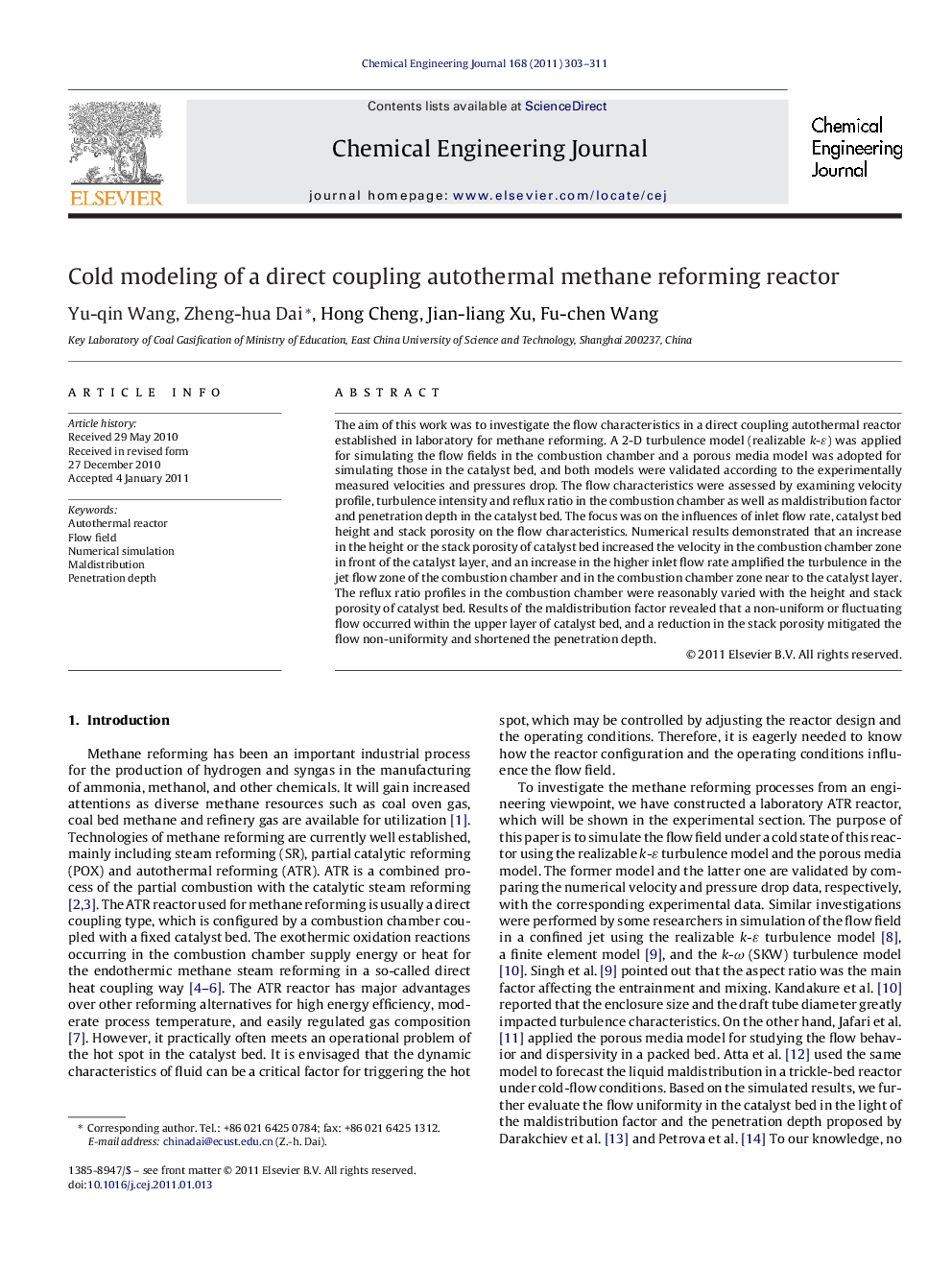| Article ID | Journal | Published Year | Pages | File Type |
|---|---|---|---|---|
| 151433 | Chemical Engineering Journal | 2011 | 9 Pages |
The aim of this work was to investigate the flow characteristics in a direct coupling autothermal reactor established in laboratory for methane reforming. A 2-D turbulence model (realizable k-ɛ) was applied for simulating the flow fields in the combustion chamber and a porous media model was adopted for simulating those in the catalyst bed, and both models were validated according to the experimentally measured velocities and pressures drop. The flow characteristics were assessed by examining velocity profile, turbulence intensity and reflux ratio in the combustion chamber as well as maldistribution factor and penetration depth in the catalyst bed. The focus was on the influences of inlet flow rate, catalyst bed height and stack porosity on the flow characteristics. Numerical results demonstrated that an increase in the height or the stack porosity of catalyst bed increased the velocity in the combustion chamber zone in front of the catalyst layer, and an increase in the higher inlet flow rate amplified the turbulence in the jet flow zone of the combustion chamber and in the combustion chamber zone near to the catalyst layer. The reflux ratio profiles in the combustion chamber were reasonably varied with the height and stack porosity of catalyst bed. Results of the maldistribution factor revealed that a non-uniform or fluctuating flow occurred within the upper layer of catalyst bed, and a reduction in the stack porosity mitigated the flow non-uniformity and shortened the penetration depth.
